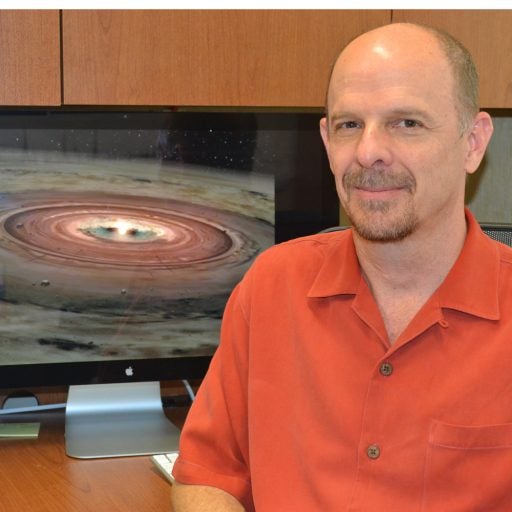Several small-scale experiments aboard NASA’s vomit comet have led to a NASA grant to study early planet formation aboard a satellite in low-Earth orbit for a year or more.
University of Central Florida physics professor Joshua Colwell this month landed a grant to place a thermos-sized experiment aboard a satellite as part of NASA’s CubeSat Launch Initiative . UCF landed two of the 14 grants awarded.
Colwell, whose area of expertise covers early planet formation, has been exploring how dust collides and forms into bigger chunks in the so-called protoplanetary disks where planets form around newborn stars. He’s led teams of students aboard several zero-gravity flights (better known as vomit comets) and experiments that have flown on the International Space Station to study the phenomena that can only be observed in zero gravity. He’s also been working on an experiment at UCF’s Center for Microgravity Research using drop towers to simulate the space environment where these collisions happen. The findings of those experiments have given him clues about how particles interact, but as the chunks grow bigger, it appears they don’t always stick together. So then how do planets form?
The experiment, which packs a lot of technical punch, will try to answer the following questions: When and why do particles stick, what happens when they don’t, and what does that tell us about the early stages of planet formation?
The project, called Cu-PACE (for CubeSat Particle Aggregation and Collision Experiment) will be the first dedicated long-duration orbital experiment to study aggregation and fragmentation of dust aggregates in microgravity.
“The long duration afforded by the orbital CubeSat platform makes a qualitative advance because it allows us to observe more collisions than in suborbital or ground-based platforms enabling us to identify rare collisions that may be crucial to planet formation,” Colwell said.
Other collaborators on the project are postdoctoral research associates Julie Brisset and Adrienne Dove and research assistant Doug Maukonen at UCF, mechanical engineering professors Larry Roe and Po-Hao Adam Huang form the University of Arkansas, and professor Jürgen Blum at the Institut für Geophysik und Extraterrestrische Physik at the Technische Universität Braunschweig in Germany. Brisset’s doctoral work with Blum was the inspiration for Cu-PACE.
Colwell joined UCF in 2006. Today he teaches, conducts research and is associate chair of the physics department and assistant director of the Florida Space Institute. He holds multiple degrees from the University of Colorado at Boulder and Stetson University. He’s published dozens of peer-reviewed papers and worked on multiple NASA projects including the Cassini mission to unlock the secrets of Saturn.
